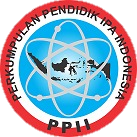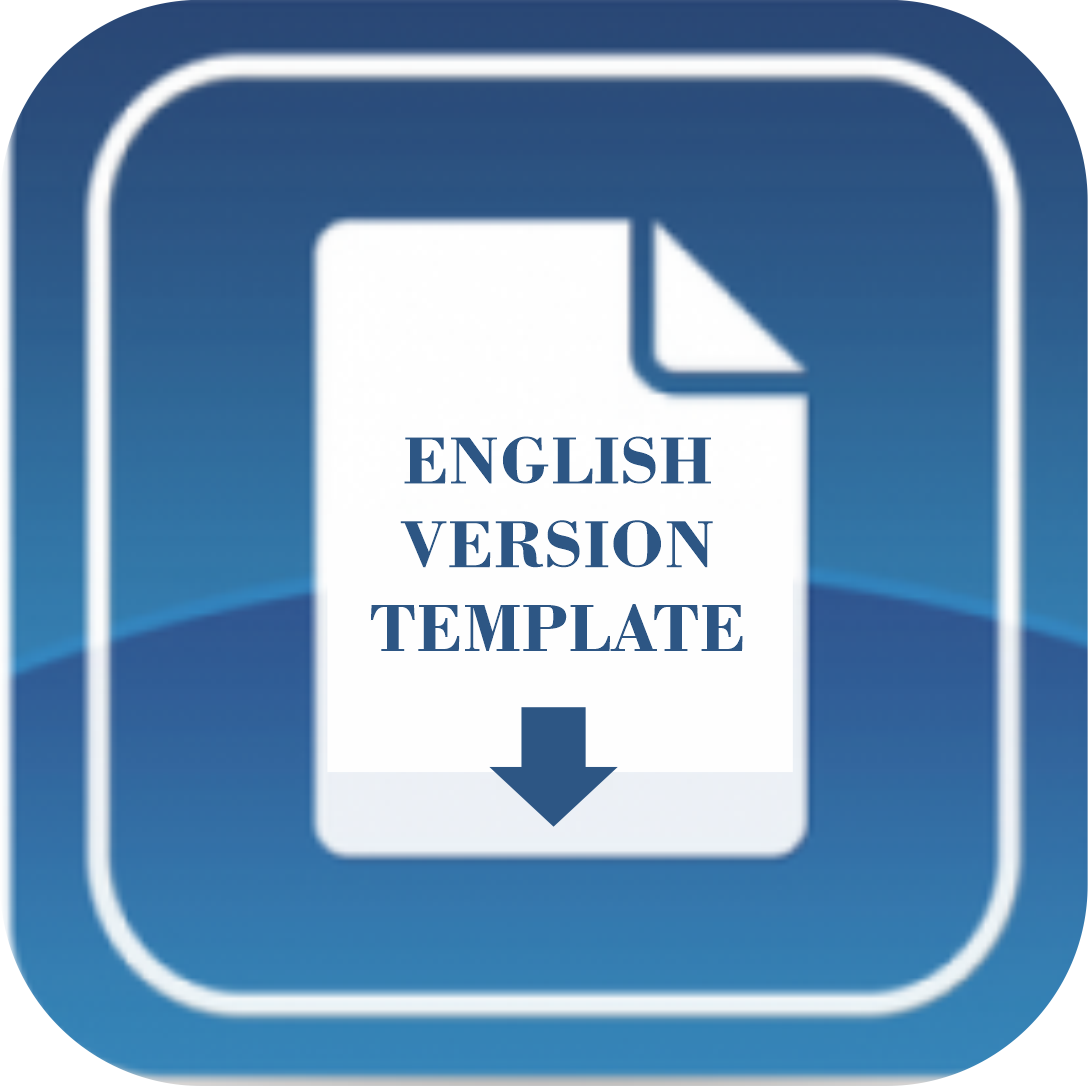| 2.72 kB /home/app1/public_html/index.php |
| 1.96 kB /home/app1/public_html/lib/pkp/includes/bootstrap.inc.php |
| 10.86 kB /home/app1/public_html/lib/pkp/includes/functions.inc.php |
| 14.41 kB /home/app1/public_html/classes/core/Application.inc.php |
| 16.62 kB /home/app1/public_html/lib/pkp/classes/core/PKPApplication.inc.php |
| 8.91 kB /home/app1/public_html/classes/statistics/StatisticsHelper.inc.php |
| 1.34 kB /home/app1/public_html/lib/pkp/classes/core/PKPProfiler.inc.php |
| 5.43 kB /home/app1/public_html/lib/pkp/lib/pqp/classes/PhpQuickProfiler.php |
| 2.81 kB /home/app1/public_html/lib/pkp/lib/pqp/classes/Console.php |
| 15.21 kB /home/app1/public_html/lib/pkp/classes/core/Core.inc.php |
| 40.97 kB /home/app1/public_html/lib/pkp/classes/core/String.inc.php |
| 1.73 kB /home/app1/public_html/lib/pkp/classes/core/Registry.inc.php |
| 2.83 kB /home/app1/public_html/lib/pkp/classes/config/Config.inc.php |
| 5.65 kB /home/app1/public_html/lib/pkp/classes/config/ConfigParser.inc.php |
| 1.93 kB /home/app1/public_html/lib/pkp/classes/db/DAORegistry.inc.php |
| 19.59 kB /home/app1/public_html/lib/pkp/classes/db/DAO.inc.php |
| 6.68 kB /home/app1/public_html/lib/pkp/classes/db/DBConnection.inc.php |
| 5.72 kB /home/app1/public_html/lib/pkp/classes/db/DAOResultFactory.inc.php |
| 1.74 kB /home/app1/public_html/lib/pkp/classes/core/ItemIterator.inc.php |
| 13.65 kB /home/app1/public_html/lib/pkp/classes/core/DataObject.inc.php |
| 1.31 kB /home/app1/public_html/lib/pkp/classes/db/XMLDAO.inc.php |
| 9.05 kB /home/app1/public_html/lib/pkp/classes/xml/XMLParser.inc.php |
| 1.93 kB /home/app1/public_html/lib/pkp/classes/xml/XMLParserDOMHandler.inc.php |
| 5.11 kB /home/app1/public_html/lib/pkp/classes/xml/XMLNode.inc.php |
| 3.69 kB /home/app1/public_html/lib/pkp/classes/cache/CacheManager.inc.php |
| 2.65 kB /home/app1/public_html/lib/pkp/classes/cache/FileCache.inc.php |
| 2.88 kB /home/app1/public_html/lib/pkp/classes/cache/GenericCache.inc.php |
| 14.28 kB /home/app1/public_html/classes/security/Validation.inc.php |
| 2.18 kB /home/app1/public_html/classes/security/Role.inc.php |
| 2.18 kB /home/app1/public_html/classes/security/Hashing.inc.php |
| 8.97 kB /home/app1/public_html/lib/pkp/classes/session/SessionManager.inc.php |
| 9.79 kB /home/app1/public_html/classes/template/TemplateManager.inc.php |
| 16.67 kB /home/app1/public_html/classes/search/ArticleSearch.inc.php |
| 13.23 kB /home/app1/public_html/classes/search/ArticleSearchIndex.inc.php |
| 2.18 kB /home/app1/public_html/lib/pkp/classes/search/SearchFileParser.inc.php |
| 904 bytes /home/app1/public_html/lib/pkp/classes/search/SearchHTMLParser.inc.php |
| 1.01 kB /home/app1/public_html/lib/pkp/classes/search/SearchHelperParser.inc.php |
| 2.27 kB /home/app1/public_html/classes/file/PublicFileManager.inc.php |
| 1.32 kB /home/app1/public_html/lib/pkp/classes/file/PKPPublicFileManager.inc.php |
| 16.46 kB /home/app1/public_html/lib/pkp/classes/file/FileManager.inc.php |
| 47.83 kB /home/app1/public_html/lib/pkp/classes/template/PKPTemplateManager.inc.php |
| 62.05 kB /home/app1/public_html/lib/pkp/lib/smarty/Smarty.class.php |
| 2.69 kB /home/app1/public_html/lib/pkp/lib/smarty/plugins/modifier.escape.php |
| 16.22 kB /home/app1/public_html/classes/notification/NotificationManager.inc.php |
| 18.78 kB /home/app1/public_html/lib/pkp/classes/notification/PKPNotificationManager.inc.php |
| 2.54 kB /home/app1/public_html/classes/notification/Notification.inc.php |
| 4.26 kB /home/app1/public_html/lib/pkp/classes/notification/PKPNotification.inc.php |
| 8.44 kB /home/app1/public_html/lib/pkp/classes/notification/NotificationDAO.inc.php |
| 7.73 kB /home/app1/public_html/lib/pkp/classes/plugins/PluginRegistry.inc.php |
| 3.74 kB /home/app1/public_html/lib/pkp/classes/plugins/HookRegistry.inc.php |
| 5.65 kB /home/app1/public_html/classes/i18n/AppLocale.inc.php |
| 19.37 kB /home/app1/public_html/lib/pkp/classes/i18n/PKPLocale.inc.php |
| 5.65 kB /home/app1/public_html/lib/pkp/classes/i18n/LocaleFile.inc.php |
| 113.87 kB /home/app1/public_html/lib/pkp/lib/adodb/adodb.inc.php |
| 38.87 kB /home/app1/public_html/lib/pkp/lib/adodb/adodb-time.inc.php |
| 1.56 kB /home/app1/public_html/lib/pkp/lib/adodb/adodb-iterator.inc.php |
| 20.70 kB /home/app1/public_html/lib/pkp/lib/adodb/drivers/adodb-mysql.inc.php |
| 7.36 kB /home/app1/public_html/lib/pkp/classes/core/Dispatcher.inc.php |
| 2.59 kB /home/app1/public_html/classes/core/Request.inc.php |
| 22.48 kB /home/app1/public_html/lib/pkp/classes/core/PKPRequest.inc.php |
| 6.79 kB /home/app1/public_html/lib/pkp/lib/phputf8/utils/validation.php |
| 16.08 kB /home/app1/public_html/lib/pkp/classes/core/PKPComponentRouter.inc.php |
| 18.64 kB /home/app1/public_html/lib/pkp/classes/core/PKPRouter.inc.php |
| 1.95 kB /home/app1/public_html/classes/core/PageRouter.inc.php |
| 12.41 kB /home/app1/public_html/lib/pkp/classes/core/PKPPageRouter.inc.php |
| 4.76 kB /home/app1/public_html/lib/pkp/classes/session/SessionDAO.inc.php |
| 3.89 kB /home/app1/public_html/lib/pkp/classes/session/Session.inc.php |
| 12.28 kB /home/app1/public_html/classes/journal/JournalDAO.inc.php |
| 12.25 kB /home/app1/public_html/classes/journal/Journal.inc.php |
| 3.39 kB /home/app1/public_html/lib/pkp/classes/metadata/MetadataTypeDescription.inc.php |
| 2.46 kB /home/app1/public_html/lib/pkp/classes/filter/ClassTypeDescription.inc.php |
| 6.21 kB /home/app1/public_html/lib/pkp/classes/filter/TypeDescription.inc.php |
| 3.52 kB /home/app1/public_html/lib/pkp/classes/filter/TypeDescriptionFactory.inc.php |
| 3.03 kB /home/app1/public_html/lib/pkp/classes/site/SiteDAO.inc.php |
| 7.18 kB /home/app1/public_html/lib/pkp/classes/site/Site.inc.php |
| 8.19 kB /home/app1/public_html/lib/pkp/classes/site/VersionDAO.inc.php |
| 5.60 kB /home/app1/public_html/lib/pkp/classes/site/Version.inc.php |
| 402 bytes /home/app1/public_html/plugins/generic/staticPages/index.php |
| 6.08 kB /home/app1/public_html/plugins/generic/staticPages/StaticPagesPlugin.inc.php |
| 1.88 kB /home/app1/public_html/lib/pkp/classes/plugins/GenericPlugin.inc.php |
| 1.77 kB /home/app1/public_html/lib/pkp/classes/plugins/LazyLoadPlugin.inc.php |
| 2.18 kB /home/app1/public_html/classes/plugins/Plugin.inc.php |
| 21.74 kB /home/app1/public_html/lib/pkp/classes/plugins/PKPPlugin.inc.php |
| 516 bytes /home/app1/public_html/plugins/generic/announcementFeed/index.php |
| 4.84 kB /home/app1/public_html/plugins/generic/announcementFeed/AnnouncementFeedPlugin.inc.php |
| 450 bytes /home/app1/public_html/plugins/generic/usageEvent/index.php |
| 13.03 kB /home/app1/public_html/plugins/generic/usageEvent/UsageEventPlugin.inc.php |
| 498 bytes /home/app1/public_html/plugins/generic/googleViewer/index.php |
| 1.65 kB /home/app1/public_html/plugins/generic/googleViewer/GoogleViewerPlugin.inc.php |
| 437 bytes /home/app1/public_html/plugins/generic/webFeed/index.php |
| 6.32 kB /home/app1/public_html/plugins/generic/webFeed/WebFeedPlugin.inc.php |
| 455 bytes /home/app1/public_html/plugins/generic/usageStats/index.php |
| 12.09 kB /home/app1/public_html/plugins/generic/usageStats/UsageStatsPlugin.inc.php |
| 4.03 kB /home/app1/public_html/plugins/generic/usageStats/UsageStatsReportPlugin.inc.php |
| 7.94 kB /home/app1/public_html/classes/plugins/ReportPlugin.inc.php |
| 413 bytes /home/app1/public_html/plugins/generic/acron/index.php |
| 9.71 kB /home/app1/public_html/plugins/generic/acron/AcronPlugin.inc.php |
| 7.82 kB /home/app1/public_html/lib/pkp/classes/scheduledTask/ScheduledTaskHelper.inc.php |
| 434 bytes /home/app1/public_html/plugins/generic/tinymce/index.php |
| 13.85 kB /home/app1/public_html/plugins/generic/tinymce/TinyMCEPlugin.inc.php |
| 467 bytes /home/app1/public_html/plugins/generic/translator/index.php |
| 1.99 kB /home/app1/public_html/plugins/generic/translator/TranslatorPlugin.inc.php |
| 455 bytes /home/app1/public_html/plugins/generic/customBlockManager/index.php |
| 4.78 kB /home/app1/public_html/plugins/generic/customBlockManager/CustomBlockManagerPlugin.inc.php |
| 439 bytes /home/app1/public_html/plugins/generic/referral/index.php |
| 8.67 kB /home/app1/public_html/plugins/generic/referral/ReferralPlugin.inc.php |
| 8.37 kB /home/app1/public_html/classes/plugins/PluginSettingsDAO.inc.php |
| 47 bytes /home/app1/public_html/cache/fc-pluginSettings-30-staticpagesplugin.php |
| 4.17 kB /home/app1/public_html/plugins/generic/staticPages/StaticPagesDAO.inc.php |
| 89 bytes /home/app1/public_html/cache/fc-pluginSettings-30-announcementfeedplugin.php |
| 47 bytes /home/app1/public_html/cache/fc-pluginSettings-30-googleviewerplugin.php |
| 104 bytes /home/app1/public_html/cache/fc-pluginSettings-30-webfeedplugin.php |
| 254 bytes /home/app1/public_html/cache/fc-pluginSettings-0-usagestatsplugin.php |
| 47 bytes /home/app1/public_html/cache/fc-pluginSettings-30-tinymceplugin.php |
| 47 bytes /home/app1/public_html/cache/fc-pluginSettings-0-translatorplugin.php |
| 642 bytes /home/app1/public_html/classes/help/Help.inc.php |
| 6.22 kB /home/app1/public_html/lib/pkp/classes/help/PKPHelp.inc.php |
| 1.38 kB /home/app1/public_html/classes/help/OJSHelpMappingFile.inc.php |
| 2.75 kB /home/app1/public_html/lib/pkp/classes/help/HelpMappingFile.inc.php |
| 2.05 kB /home/app1/public_html/lib/pkp/classes/help/PluginHelpMappingFile.inc.php |
| 282 bytes /home/app1/public_html/cache/fc-pluginSettings-30-customblockmanagerplugin.php |
| 111 bytes /home/app1/public_html/cache/fc-pluginSettings-30-referralplugin.php |
| 2.86 kB /home/app1/public_html/plugins/generic/referral/Referral.inc.php |
| 5.94 kB /home/app1/public_html/plugins/generic/referral/ReferralDAO.inc.php |
| 2.59 kB /home/app1/public_html/cache/fc-locale-1f9dbf528d348783f017355b14ae9b3e.php |
| 1.55 kB /home/app1/public_html/cache/fc-locale-005a065b9c7e47fe8ec5e93cc24d9658.php |
| 5.90 kB /home/app1/public_html/cache/fc-locale-74a06b98a21881c0c27b82897282d04b.php |
| 610 bytes /home/app1/public_html/cache/fc-locale-c95d7911b8b0da12d45eb2b0c884164c.php |
| 434 bytes /home/app1/public_html/cache/fc-locale-0eff871d8e03233acda4bf07b56efeb8.php |
| 8.83 kB /home/app1/public_html/cache/fc-locale-30ade3af71c390241cfe899534e36d36.php |
| 1.01 kB /home/app1/public_html/cache/fc-locale-32de70b612cc9ebdfae5a7ddba703f7f.php |
| 239 bytes /home/app1/public_html/cache/fc-locale-aaf03fa6fe1d26cd4eadd93e0d17c002.php |
| 198 bytes /home/app1/public_html/cache/fc-locale-95d24e09ab8af6f9bb8a02f637efbefb.php |
| 1.12 kB /home/app1/public_html/cache/fc-locale-8fa4e74d29c2d2c6840c521f0ef3f9c1.php |
| 1.55 kB /home/app1/public_html/cache/fc-locale-a7a4b1f73f3b922eb712521db2537797.php |
| 17.52 kB /home/app1/public_html/cache/fc-locale-03b174b61510807426c2a2c128f6a86a.php |
| 5.52 kB /home/app1/public_html/cache/fc-locale-list.php |
| 35.76 kB /home/app1/public_html/lib/pkp/classes/form/FormBuilderVocabulary.inc.php |
| 6.58 kB /home/app1/public_html/lib/pkp/classes/site/SiteSettingsDAO.inc.php |
| 1.41 kB /home/app1/public_html/cache/fc-siteSettings-site.php |
| 10.49 kB /home/app1/public_html/classes/journal/JournalSettingsDAO.inc.php |
| 57.90 kB /home/app1/public_html/cache/fc-journalSettings-30.php |
| 411 bytes /home/app1/public_html/plugins/themes/nusantara3columnsNavy/index.php |
| 1.19 kB /home/app1/public_html/plugins/themes/nusantara3columnsNavy/Nusantara3columnsNavyThemePlugin.inc.php |
| 1.31 kB /home/app1/public_html/classes/plugins/ThemePlugin.inc.php |
| 18.40 kB /home/app1/public_html/classes/payment/ojs/OJSPaymentManager.inc.php |
| 8.33 kB /home/app1/public_html/classes/payment/ojs/OJSQueuedPayment.inc.php |
| 1.09 kB /home/app1/public_html/lib/pkp/classes/payment/QueuedPayment.inc.php |
| 3.14 kB /home/app1/public_html/lib/pkp/classes/payment/Payment.inc.php |
| 2.82 kB /home/app1/public_html/lib/pkp/classes/payment/PaymentManager.inc.php |
| 1.91 kB /home/app1/public_html/cache/fc-pluginSettings-0-acronplugin.php |
| 2.21 kB /home/app1/public_html/lib/pkp/classes/scheduledTask/ScheduledTaskDAO.inc.php |
| 4.08 kB /home/app1/public_html/lib/pkp/classes/scheduledTask/ScheduledTask.inc.php |
| 637 bytes /home/app1/public_html/pages/article/index.php |
| 20.81 kB /home/app1/public_html/pages/article/ArticleHandler.inc.php |
| 16.98 kB /home/app1/public_html/classes/rt/ojs/RTDAO.inc.php |
| 2.62 kB /home/app1/public_html/classes/rt/ojs/JournalRT.inc.php |
| 3.27 kB /home/app1/public_html/lib/pkp/classes/rt/RT.inc.php |
| 5.57 kB /home/app1/public_html/lib/pkp/classes/rt/RTStruct.inc.php |
| 594 bytes /home/app1/public_html/classes/handler/Handler.inc.php |
| 14.50 kB /home/app1/public_html/lib/pkp/classes/handler/PKPHandler.inc.php |
| 1.70 kB /home/app1/public_html/lib/pkp/classes/handler/validation/HandlerValidator.inc.php |
| 1.22 kB /home/app1/public_html/lib/pkp/classes/handler/validation/HandlerValidatorRoles.inc.php |
| 1.40 kB /home/app1/public_html/lib/pkp/classes/handler/validation/HandlerValidatorPolicy.inc.php |
| 3.74 kB /home/app1/public_html/lib/pkp/classes/security/authorization/RoleBasedHandlerOperationPolicy.inc.php |
| 2.04 kB /home/app1/public_html/lib/pkp/classes/security/authorization/HandlerOperationPolicy.inc.php |
| 3.66 kB /home/app1/public_html/lib/pkp/classes/security/authorization/AuthorizationPolicy.inc.php |
| 1.49 kB /home/app1/public_html/lib/pkp/classes/handler/validation/HandlerValidatorCustom.inc.php |
| 1.22 kB /home/app1/public_html/classes/handler/validation/HandlerValidatorJournal.inc.php |
| 1.58 kB /home/app1/public_html/classes/handler/validation/HandlerValidatorSubmissionComment.inc.php |
| 2.93 kB /home/app1/public_html/classes/rt/ojs/SharingRT.inc.php |
| 8.45 kB /home/app1/public_html/lib/pkp/lib/phputf8/utils/ascii.php |
| 1.77 kB /home/app1/public_html/lib/pkp/classes/security/authorization/RestrictedSiteAccessPolicy.inc.php |
| 7.21 kB /home/app1/public_html/lib/pkp/classes/security/authorization/AuthorizationDecisionManager.inc.php |
| 2.68 kB /home/app1/public_html/lib/pkp/classes/security/authorization/PolicySet.inc.php |
| 1.26 kB /home/app1/public_html/lib/pkp/classes/security/authorization/HttpsPolicy.inc.php |
| 8.53 kB /home/app1/public_html/classes/issue/IssueAction.inc.php |
| 26.41 kB /home/app1/public_html/classes/article/PublishedArticleDAO.inc.php |
| 4.01 kB /home/app1/public_html/classes/article/PublishedArticle.inc.php |
| 23.89 kB /home/app1/public_html/classes/article/Article.inc.php |
| 20.50 kB /home/app1/public_html/lib/pkp/classes/submission/Submission.inc.php |
| 25.28 kB /home/app1/public_html/classes/article/ArticleDAO.inc.php |
| 7.44 kB /home/app1/public_html/classes/article/AuthorDAO.inc.php |
| 1.75 kB /home/app1/public_html/classes/article/Author.inc.php |
| 6.47 kB /home/app1/public_html/lib/pkp/classes/submission/PKPAuthor.inc.php |
| 7.05 kB /home/app1/public_html/lib/pkp/classes/submission/PKPAuthorDAO.inc.php |
| 17.91 kB /home/app1/public_html/classes/article/ArticleGalleyDAO.inc.php |
| 3.95 kB /home/app1/public_html/classes/article/ArticleGalley.inc.php |
| 3.87 kB /home/app1/public_html/classes/article/ArticleFile.inc.php |
| 4.68 kB /home/app1/public_html/lib/pkp/classes/submission/SubmissionFile.inc.php |
| 2.84 kB /home/app1/public_html/lib/pkp/classes/file/PKPFile.inc.php |
| 6.18 kB /home/app1/public_html/classes/article/ArticleHTMLGalley.inc.php |
| 9.79 kB /home/app1/public_html/classes/article/ArticleFileDAO.inc.php |
| 1.29 kB /home/app1/public_html/lib/pkp/classes/file/PKPFileDAO.inc.php |
| 15.67 kB /home/app1/public_html/classes/article/SuppFileDAO.inc.php |
| 7.82 kB /home/app1/public_html/classes/article/SuppFile.inc.php |
| 23.94 kB /home/app1/public_html/classes/issue/IssueDAO.inc.php |
| 17.59 kB /home/app1/public_html/classes/issue/Issue.inc.php |
| 15.50 kB /home/app1/public_html/classes/security/RoleDAO.inc.php |
| 3.51 kB /home/app1/public_html/classes/user/UserDAO.inc.php |
| 1.41 kB /home/app1/public_html/classes/user/User.inc.php |
| 13.07 kB /home/app1/public_html/lib/pkp/classes/user/PKPUser.inc.php |
| 17.36 kB /home/app1/public_html/lib/pkp/classes/user/PKPUserDAO.inc.php |
| 25.17 kB /home/app1/public_html/classes/subscription/InstitutionalSubscriptionDAO.inc.php |
| 14.81 kB /home/app1/public_html/classes/subscription/SubscriptionDAO.inc.php |
| 7.71 kB /home/app1/public_html/classes/subscription/Subscription.inc.php |
| 7.65 kB /home/app1/public_html/classes/subscription/SubscriptionType.inc.php |
| 2.83 kB /home/app1/public_html/classes/subscription/InstitutionalSubscription.inc.php |
| 34.54 kB /home/app1/public_html/cache/fc-locale-289f805dbcc50d60fd27f62325c88f5e.php |
| 10.67 kB /home/app1/public_html/cache/fc-locale-ef6602d15867b3b9487688eee676d126.php |
| 74.81 kB /home/app1/public_html/cache/fc-locale-39ad57a0a799a092b476f7b3d029e60d.php |
| 17.28 kB /home/app1/public_html/classes/journal/SectionDAO.inc.php |
| 7.65 kB /home/app1/public_html/classes/journal/Section.inc.php |
| 8.31 kB /home/app1/public_html/lib/pkp/classes/comment/CommentDAO.inc.php |
| 4.20 kB /home/app1/public_html/lib/pkp/classes/comment/Comment.inc.php |
| 15.26 kB /home/app1/public_html/classes/subscription/IndividualSubscriptionDAO.inc.php |
| 971 bytes /home/app1/public_html/classes/subscription/IndividualSubscription.inc.php |
| 23.69 kB /home/app1/public_html/lib/pkp/classes/citation/CitationDAO.inc.php |
| 6.25 kB /home/app1/public_html/lib/pkp/classes/citation/Citation.inc.php |
| 5.50 kB /home/app1/public_html/lib/pkp/plugins/metadata/nlm30/schema/Nlm30CitationSchema.inc.php |
| 8.48 kB /home/app1/public_html/lib/pkp/classes/metadata/MetadataSchema.inc.php |
| 14.65 kB /home/app1/public_html/lib/pkp/classes/metadata/MetadataProperty.inc.php |
| 5.41 kB /home/app1/public_html/lib/pkp/plugins/metadata/nlm30/filter/Nlm30CitationSchemaCitationAdapter.inc.php |
| 12.52 kB /home/app1/public_html/lib/pkp/classes/metadata/MetadataDataObjectAdapter.inc.php |
| 7.74 kB /home/app1/public_html/lib/pkp/classes/filter/PersistableFilter.inc.php |
| 12.99 kB /home/app1/public_html/lib/pkp/classes/filter/Filter.inc.php |
| 3.54 kB /home/app1/public_html/lib/pkp/classes/filter/FilterGroup.inc.php |
| 18.24 kB /home/app1/public_html/lib/pkp/classes/metadata/MetadataDescription.inc.php |
| 1.61 kB /home/app1/public_html/lib/pkp/plugins/metadata/nlm30/schema/Nlm30NameSchema.inc.php |
| 414 bytes /home/app1/public_html/plugins/pubIds/doi/index.php |
| 8.76 kB /home/app1/public_html/plugins/pubIds/doi/DOIPubIdPlugin.inc.php |
| 15.52 kB /home/app1/public_html/classes/plugins/PubIdPlugin.inc.php |
| 2.37 kB /home/app1/public_html/lib/pkp/classes/i18n/CountryDAO.inc.php |
| 6.11 kB /home/app1/public_html/cache/fc-country-en_US.php |
| 63 bytes /home/app1/public_html/cache/fc-pluginSettings-0-usageeventplugin.php |
| 362 bytes /home/app1/public_html/cache/fc-pluginSettings-30-doipubidplugin.php |
| 3.89 kB /home/app1/public_html/cache/fc-core-872cf38a2cbfffd9fe985eb0124f62ac.php |
| 688 bytes /home/app1/public_html/lib/pkp/classes/file/PrivateFileManager.inc.php |
| 478 bytes /home/app1/public_html/plugins/blocks/readingTools/index.php |
| 970 bytes /home/app1/public_html/plugins/blocks/readingTools/ReadingToolsBlockPlugin.inc.php |
| 4.50 kB /home/app1/public_html/lib/pkp/classes/plugins/BlockPlugin.inc.php |
| 79 bytes /home/app1/public_html/cache/fc-pluginSettings-30-readingtoolsblockplugin.php |
| 471 bytes /home/app1/public_html/plugins/blocks/information/index.php |
| 1.46 kB /home/app1/public_html/plugins/blocks/information/InformationBlockPlugin.inc.php |
| 79 bytes /home/app1/public_html/cache/fc-pluginSettings-30-informationblockplugin.php |
| 466 bytes /home/app1/public_html/plugins/blocks/authorBios/index.php |
| 1.35 kB /home/app1/public_html/plugins/blocks/authorBios/AuthorBiosBlockPlugin.inc.php |
| 79 bytes /home/app1/public_html/cache/fc-pluginSettings-30-authorbiosblockplugin.php |
| 479 bytes /home/app1/public_html/plugins/blocks/notification/index.php |
| 1.76 kB /home/app1/public_html/plugins/blocks/notification/NotificationBlockPlugin.inc.php |
| 79 bytes /home/app1/public_html/cache/fc-pluginSettings-30-notificationblockplugin.php |
| 480 bytes /home/app1/public_html/plugins/blocks/keywordCloud/index.php |
| 2.49 kB /home/app1/public_html/plugins/blocks/keywordCloud/KeywordCloudBlockPlugin.inc.php |
| 79 bytes /home/app1/public_html/cache/fc-pluginSettings-30-keywordcloudblockplugin.php |
| 429 bytes /home/app1/public_html/plugins/blocks/role/index.php |
| 3.60 kB /home/app1/public_html/plugins/blocks/role/RoleBlockPlugin.inc.php |
| 79 bytes /home/app1/public_html/cache/fc-pluginSettings-30-roleblockplugin.php |
| 429 bytes /home/app1/public_html/plugins/blocks/help/index.php |
| 1.80 kB /home/app1/public_html/plugins/blocks/help/HelpBlockPlugin.inc.php |
| 79 bytes /home/app1/public_html/cache/fc-pluginSettings-30-helpblockplugin.php |
| 445 bytes /home/app1/public_html/plugins/blocks/donation/index.php |
| 1.97 kB /home/app1/public_html/plugins/blocks/donation/DonationBlockPlugin.inc.php |
| 79 bytes /home/app1/public_html/cache/fc-pluginSettings-30-donationblockplugin.php |
| 474 bytes /home/app1/public_html/plugins/blocks/developedBy/index.php |
| 1.86 kB /home/app1/public_html/plugins/blocks/developedBy/DevelopedByBlockPlugin.inc.php |
| 79 bytes /home/app1/public_html/cache/fc-pluginSettings-30-developedbyblockplugin.php |
| 2.57 kB /home/app1/public_html/plugins/generic/announcementFeed/AnnouncementFeedBlockPlugin.inc.php |
| 79 bytes /home/app1/public_html/cache/fc-pluginSettings-30-announcementfeedblockplugin.php |
| 2.83 kB /home/app1/public_html/plugins/generic/webFeed/WebFeedBlockPlugin.inc.php |
| 79 bytes /home/app1/public_html/cache/fc-pluginSettings-30-webfeedblockplugin.php |
| 5.59 kB /home/app1/public_html/plugins/generic/customBlockManager/CustomBlockPlugin.inc.php |
| 1.66 kB /home/app1/public_html/cache/fc-pluginSettings-30-visitors.php |
| 1.58 kB /home/app1/public_html/cache/fc-pluginSettings-30-collaborative.php |
| 1.68 kB /home/app1/public_html/cache/fc-pluginSettings-30-direct chat.php |
| 6.21 kB /home/app1/public_html/cache/fc-pluginSettings-30-tools.php |
| 5.16 kB /home/app1/public_html/cache/fc-pluginSettings-30-additional menu.php |
| 1.05 kB /home/app1/public_html/cache/fc-pluginSettings-30-journal template.php |
| 135 bytes /home/app1/public_html/cache/fc-pluginSettings-30-issn (online) barcode.php |
| 261 bytes /home/app1/public_html/cache/fc-pluginSettings-30-supported by.php |
| 20.13 kB /home/app1/public_html/cache/t_compile/%%38^38D^38D7420B%%article.tpl.php |
| 4.33 kB /home/app1/public_html/lib/pkp/lib/smarty/internals/core.load_plugins.php |
| 1.90 kB /home/app1/public_html/lib/pkp/lib/smarty/internals/core.assemble_plugin_filepath.php |
| 717 bytes /home/app1/public_html/lib/pkp/lib/smarty/plugins/modifier.nl2br.php |
| 13.77 kB /home/app1/public_html/cache/t_compile/%%35^350^3508C2FA%%header.tpl.php |
| 585 bytes /home/app1/public_html/lib/pkp/lib/smarty/plugins/modifier.replace.php |
| 676 bytes /home/app1/public_html/lib/pkp/lib/smarty/plugins/modifier.strip_tags.php |
| 16.94 kB /home/app1/public_html/cache/t_compile/%%28^280^280EE005%%dublincore.tpl.php |
| 1.74 kB /home/app1/public_html/lib/pkp/lib/smarty/plugins/modifier.date_format.php |
| 1.14 kB /home/app1/public_html/lib/pkp/lib/smarty/plugins/shared.make_timestamp.php |
| 9.64 kB /home/app1/public_html/lib/pkp/lib/phputf8/utils/unicode.php |
| 16.99 kB /home/app1/public_html/lib/pkp/lib/phputf8/native/core.php |
| 193 bytes /home/app1/public_html/cache/fc-locale-f90252dc6a63da3f259c3add542b2e84.php |
| 192 bytes /home/app1/public_html/cache/fc-locale-fd8775eb0e300ffe8b09bc9aa449efb0.php |
| 206 bytes /home/app1/public_html/cache/fc-locale-2fbbe635963c566bfacea5c8449ae019.php |
| 250 bytes /home/app1/public_html/cache/fc-locale-060b54f5ec922ace60afc62be3963566.php |
| 427 bytes /home/app1/public_html/cache/fc-locale-89d42a5273429a1f41f354a4b6298f42.php |
| 271 bytes /home/app1/public_html/cache/fc-locale-8bfc71ba75ece78c99018f74e29c7c53.php |
| 765 bytes /home/app1/public_html/cache/fc-locale-3719c9270a4bef9d86b1066322f88ff6.php |
| 159 bytes /home/app1/public_html/cache/fc-locale-96aaa80660bbcb2f60b6516cedd6c363.php |
| 240 bytes /home/app1/public_html/cache/fc-locale-d20be57bb305d999dbcf073bb906a2aa.php |
| 6.25 kB /home/app1/public_html/cache/fc-locale-b0bcfbc5ba59463ad133a509be3e8ed1.php |
| 11.60 kB /home/app1/public_html/cache/t_compile/%%31^31B^31BC1435%%googlescholar.tpl.php |
| 481 bytes /home/app1/public_html/lib/pkp/lib/smarty/plugins/modifier.lower.php |
| 310 bytes /home/app1/public_html/cache/t_compile/%%E7^E7B^E7BE809F%%block.tpl.php |
| 1.92 kB /home/app1/public_html/cache/t_compile/%%81^81B^81B5CECE%%block.tpl.php |
| 10.16 kB /home/app1/public_html/cache/t_compile/%%38^380^380823E8%%block.tpl.php |
| 3.78 kB /home/app1/public_html/cache/t_compile/%%5D^5DB^5DB8977D%%block.tpl.php |
| 235 bytes /home/app1/public_html/lib/pkp/lib/htmlpurifier/library/HTMLPurifier.path.php |
| 9.70 kB /home/app1/public_html/lib/pkp/lib/htmlpurifier/library/HTMLPurifier.includes.php |
| 8.62 kB /home/app1/public_html/lib/pkp/lib/htmlpurifier/library/HTMLPurifier.php |
| 4.28 kB /home/app1/public_html/lib/pkp/lib/htmlpurifier/library/HTMLPurifier/AttrCollections.php |
| 4.48 kB /home/app1/public_html/lib/pkp/lib/htmlpurifier/library/HTMLPurifier/AttrDef.php |
| 1.81 kB /home/app1/public_html/lib/pkp/lib/htmlpurifier/library/HTMLPurifier/AttrTransform.php |
| 3.44 kB /home/app1/public_html/lib/pkp/lib/htmlpurifier/library/HTMLPurifier/AttrTypes.php |
| 6.26 kB /home/app1/public_html/lib/pkp/lib/htmlpurifier/library/HTMLPurifier/AttrValidator.php |
| 3.92 kB /home/app1/public_html/lib/pkp/lib/htmlpurifier/library/HTMLPurifier/Bootstrap.php |
| 1.27 kB /home/app1/public_html/lib/pkp/lib/htmlpurifier/library/HTMLPurifier/Definition.php |
| 13.02 kB /home/app1/public_html/lib/pkp/lib/htmlpurifier/library/HTMLPurifier/CSSDefinition.php |
| 1.38 kB /home/app1/public_html/lib/pkp/lib/htmlpurifier/library/HTMLPurifier/ChildDef.php |
| 26.69 kB /home/app1/public_html/lib/pkp/lib/htmlpurifier/library/HTMLPurifier/Config.php |
| 5.62 kB /home/app1/public_html/lib/pkp/lib/htmlpurifier/library/HTMLPurifier/ConfigSchema.php |
| 5.17 kB /home/app1/public_html/lib/pkp/lib/htmlpurifier/library/HTMLPurifier/ContentSets.php |
| 2.34 kB /home/app1/public_html/lib/pkp/lib/htmlpurifier/library/HTMLPurifier/Context.php |
| 3.19 kB /home/app1/public_html/lib/pkp/lib/htmlpurifier/library/HTMLPurifier/DefinitionCache.php |
| 2.74 kB /home/app1/public_html/lib/pkp/lib/htmlpurifier/library/HTMLPurifier/DefinitionCacheFactory.php |
| 1.37 kB /home/app1/public_html/lib/pkp/lib/htmlpurifier/library/HTMLPurifier/Doctype.php |
| 3.44 kB /home/app1/public_html/lib/pkp/lib/htmlpurifier/library/HTMLPurifier/DoctypeRegistry.php |
| 6.17 kB /home/app1/public_html/lib/pkp/lib/htmlpurifier/library/HTMLPurifier/ElementDef.php |
| 23.15 kB /home/app1/public_html/lib/pkp/lib/htmlpurifier/library/HTMLPurifier/Encoder.php |
| 1.26 kB /home/app1/public_html/lib/pkp/lib/htmlpurifier/library/HTMLPurifier/EntityLookup.php |
| 4.62 kB /home/app1/public_html/lib/pkp/lib/htmlpurifier/library/HTMLPurifier/EntityParser.php |
| 7.17 kB /home/app1/public_html/lib/pkp/lib/htmlpurifier/library/HTMLPurifier/ErrorCollector.php |
| 1.61 kB /home/app1/public_html/lib/pkp/lib/htmlpurifier/library/HTMLPurifier/ErrorStruct.php |
| 177 bytes /home/app1/public_html/lib/pkp/lib/htmlpurifier/library/HTMLPurifier/Exception.php |
| 1.30 kB /home/app1/public_html/lib/pkp/lib/htmlpurifier/library/HTMLPurifier/Filter.php |
| 9.43 kB /home/app1/public_html/lib/pkp/lib/htmlpurifier/library/HTMLPurifier/Generator.php |
| 15.72 kB /home/app1/public_html/lib/pkp/lib/htmlpurifier/library/HTMLPurifier/HTMLDefinition.php |
| 9.26 kB /home/app1/public_html/lib/pkp/lib/htmlpurifier/library/HTMLPurifier/HTMLModule.php |
| 14.48 kB /home/app1/public_html/lib/pkp/lib/htmlpurifier/library/HTMLPurifier/HTMLModuleManager.php |
| 1.50 kB /home/app1/public_html/lib/pkp/lib/htmlpurifier/library/HTMLPurifier/IDAccumulator.php |
| 8.46 kB /home/app1/public_html/lib/pkp/lib/htmlpurifier/library/HTMLPurifier/Injector.php |
| 5.30 kB /home/app1/public_html/lib/pkp/lib/htmlpurifier/library/HTMLPurifier/Language.php |
| 6.25 kB /home/app1/public_html/lib/pkp/lib/htmlpurifier/library/HTMLPurifier/LanguageFactory.php |
| 3.07 kB /home/app1/public_html/lib/pkp/lib/htmlpurifier/library/HTMLPurifier/Length.php |
| 11.28 kB /home/app1/public_html/lib/pkp/lib/htmlpurifier/library/HTMLPurifier/Lexer.php |
| 3.29 kB /home/app1/public_html/lib/pkp/lib/htmlpurifier/library/HTMLPurifier/PercentEncoder.php |
| 2.08 kB /home/app1/public_html/lib/pkp/lib/htmlpurifier/library/HTMLPurifier/PropertyList.php |
| 734 bytes /home/app1/public_html/lib/pkp/lib/htmlpurifier/library/HTMLPurifier/PropertyListIterator.php |
| 680 bytes /home/app1/public_html/lib/pkp/lib/htmlpurifier/library/HTMLPurifier/Strategy.php |
| 975 bytes /home/app1/public_html/lib/pkp/lib/htmlpurifier/library/HTMLPurifier/StringHash.php |
| 3.16 kB /home/app1/public_html/lib/pkp/lib/htmlpurifier/library/HTMLPurifier/StringHashParser.php |
| 998 bytes /home/app1/public_html/lib/pkp/lib/htmlpurifier/library/HTMLPurifier/TagTransform.php |
| 1.56 kB /home/app1/public_html/lib/pkp/lib/htmlpurifier/library/HTMLPurifier/Token.php |
| 2.60 kB /home/app1/public_html/lib/pkp/lib/htmlpurifier/library/HTMLPurifier/TokenFactory.php |
| 9.22 kB /home/app1/public_html/lib/pkp/lib/htmlpurifier/library/HTMLPurifier/URI.php |
| 3.24 kB /home/app1/public_html/lib/pkp/lib/htmlpurifier/library/HTMLPurifier/URIDefinition.php |
| 2.18 kB /home/app1/public_html/lib/pkp/lib/htmlpurifier/library/HTMLPurifier/URIFilter.php |
| 2.23 kB /home/app1/public_html/lib/pkp/lib/htmlpurifier/library/HTMLPurifier/URIParser.php |
| 3.28 kB /home/app1/public_html/lib/pkp/lib/htmlpurifier/library/HTMLPurifier/URIScheme.php |
| 2.10 kB /home/app1/public_html/lib/pkp/lib/htmlpurifier/library/HTMLPurifier/URISchemeRegistry.php |
| 8.99 kB /home/app1/public_html/lib/pkp/lib/htmlpurifier/library/HTMLPurifier/UnitConverter.php |
| 5.08 kB /home/app1/public_html/lib/pkp/lib/htmlpurifier/library/HTMLPurifier/VarParser.php |
| 157 bytes /home/app1/public_html/lib/pkp/lib/htmlpurifier/library/HTMLPurifier/VarParserException.php |
| 3.01 kB /home/app1/public_html/lib/pkp/lib/htmlpurifier/library/HTMLPurifier/AttrDef/CSS.php |
| 534 bytes /home/app1/public_html/lib/pkp/lib/htmlpurifier/library/HTMLPurifier/AttrDef/Clone.php |
| 1.95 kB /home/app1/public_html/lib/pkp/lib/htmlpurifier/library/HTMLPurifier/AttrDef/Enum.php |
| 2.19 kB /home/app1/public_html/lib/pkp/lib/htmlpurifier/library/HTMLPurifier/AttrDef/Integer.php |
| 2.11 kB /home/app1/public_html/lib/pkp/lib/htmlpurifier/library/HTMLPurifier/AttrDef/Lang.php |
| 972 bytes /home/app1/public_html/lib/pkp/lib/htmlpurifier/library/HTMLPurifier/AttrDef/Switch.php |
| 269 bytes /home/app1/public_html/lib/pkp/lib/htmlpurifier/library/HTMLPurifier/AttrDef/Text.php |
| 2.07 kB /home/app1/public_html/lib/pkp/lib/htmlpurifier/library/HTMLPurifier/AttrDef/URI.php |
| 1.75 kB /home/app1/public_html/lib/pkp/lib/htmlpurifier/library/HTMLPurifier/AttrDef/CSS/Number.php |
| 562 bytes /home/app1/public_html/lib/pkp/lib/htmlpurifier/library/HTMLPurifier/AttrDef/CSS/AlphaValue.php |
| 2.66 kB /home/app1/public_html/lib/pkp/lib/htmlpurifier/library/HTMLPurifier/AttrDef/CSS/Background.php |
| 3.65 kB /home/app1/public_html/lib/pkp/lib/htmlpurifier/library/HTMLPurifier/AttrDef/CSS/BackgroundPosition.php |
| 1.26 kB /home/app1/public_html/lib/pkp/lib/htmlpurifier/library/HTMLPurifier/AttrDef/CSS/Border.php |
| 2.51 kB /home/app1/public_html/lib/pkp/lib/htmlpurifier/library/HTMLPurifier/AttrDef/CSS/Color.php |
| 1.07 kB /home/app1/public_html/lib/pkp/lib/htmlpurifier/library/HTMLPurifier/AttrDef/CSS/Composite.php |
| 775 bytes /home/app1/public_html/lib/pkp/lib/htmlpurifier/library/HTMLPurifier/AttrDef/CSS/DenyElementDecorator.php |
| 1.86 kB /home/app1/public_html/lib/pkp/lib/htmlpurifier/library/HTMLPurifier/AttrDef/CSS/Filter.php |
| 5.80 kB /home/app1/public_html/lib/pkp/lib/htmlpurifier/library/HTMLPurifier/AttrDef/CSS/Font.php |
| 8.81 kB /home/app1/public_html/lib/pkp/lib/htmlpurifier/library/HTMLPurifier/AttrDef/CSS/FontFamily.php |
| 517 bytes /home/app1/public_html/lib/pkp/lib/htmlpurifier/library/HTMLPurifier/AttrDef/CSS/Ident.php |
| 1.27 kB /home/app1/public_html/lib/pkp/lib/htmlpurifier/library/HTMLPurifier/AttrDef/CSS/ImportantDecorator.php |
| 1.34 kB /home/app1/public_html/lib/pkp/lib/htmlpurifier/library/HTMLPurifier/AttrDef/CSS/Length.php |
| 2.21 kB /home/app1/public_html/lib/pkp/lib/htmlpurifier/library/HTMLPurifier/AttrDef/CSS/ListStyle.php |
| 1.73 kB /home/app1/public_html/lib/pkp/lib/htmlpurifier/library/HTMLPurifier/AttrDef/CSS/Multiple.php |
| 1003 bytes /home/app1/public_html/lib/pkp/lib/htmlpurifier/library/HTMLPurifier/AttrDef/CSS/Percentage.php |
| 949 bytes /home/app1/public_html/lib/pkp/lib/htmlpurifier/library/HTMLPurifier/AttrDef/CSS/TextDecoration.php |
| 2.17 kB /home/app1/public_html/lib/pkp/lib/htmlpurifier/library/HTMLPurifier/AttrDef/CSS/URI.php |
| 560 bytes /home/app1/public_html/lib/pkp/lib/htmlpurifier/library/HTMLPurifier/AttrDef/HTML/Bool.php |
| 1.63 kB /home/app1/public_html/lib/pkp/lib/htmlpurifier/library/HTMLPurifier/AttrDef/HTML/Nmtokens.php |
| 1.16 kB /home/app1/public_html/lib/pkp/lib/htmlpurifier/library/HTMLPurifier/AttrDef/HTML/Class.php |
| 819 bytes /home/app1/public_html/lib/pkp/lib/htmlpurifier/library/HTMLPurifier/AttrDef/HTML/Color.php |
| 570 bytes /home/app1/public_html/lib/pkp/lib/htmlpurifier/library/HTMLPurifier/AttrDef/HTML/FrameTarget.php |
| 2.46 kB /home/app1/public_html/lib/pkp/lib/htmlpurifier/library/HTMLPurifier/AttrDef/HTML/ID.php |
| 1.22 kB /home/app1/public_html/lib/pkp/lib/htmlpurifier/library/HTMLPurifier/AttrDef/HTML/Pixels.php |
| 950 bytes /home/app1/public_html/lib/pkp/lib/htmlpurifier/library/HTMLPurifier/AttrDef/HTML/Length.php |
| 1.37 kB /home/app1/public_html/lib/pkp/lib/htmlpurifier/library/HTMLPurifier/AttrDef/HTML/LinkTypes.php |
| 984 bytes /home/app1/public_html/lib/pkp/lib/htmlpurifier/library/HTMLPurifier/AttrDef/HTML/MultiLength.php |
| 282 bytes /home/app1/public_html/lib/pkp/lib/htmlpurifier/library/HTMLPurifier/AttrDef/URI/Email.php |
| 3.55 kB /home/app1/public_html/lib/pkp/lib/htmlpurifier/library/HTMLPurifier/AttrDef/URI/Host.php |
| 806 bytes /home/app1/public_html/lib/pkp/lib/htmlpurifier/library/HTMLPurifier/AttrDef/URI/IPv4.php |
| 2.54 kB /home/app1/public_html/lib/pkp/lib/htmlpurifier/library/HTMLPurifier/AttrDef/URI/IPv6.php |
| 639 bytes /home/app1/public_html/lib/pkp/lib/htmlpurifier/library/HTMLPurifier/AttrDef/URI/Email/SimpleCheck.php |
| 524 bytes /home/app1/public_html/lib/pkp/lib/htmlpurifier/library/HTMLPurifier/AttrTransform/Background.php |
| 463 bytes /home/app1/public_html/lib/pkp/lib/htmlpurifier/library/HTMLPurifier/AttrTransform/BdoDir.php |
| 500 bytes /home/app1/public_html/lib/pkp/lib/htmlpurifier/library/HTMLPurifier/AttrTransform/BgColor.php |
| 867 bytes /home/app1/public_html/lib/pkp/lib/htmlpurifier/library/HTMLPurifier/AttrTransform/BoolToCSS.php |
| 501 bytes /home/app1/public_html/lib/pkp/lib/htmlpurifier/library/HTMLPurifier/AttrTransform/Border.php |
| 1.43 kB /home/app1/public_html/lib/pkp/lib/htmlpurifier/library/HTMLPurifier/AttrTransform/EnumToCSS.php |
| 1.19 kB /home/app1/public_html/lib/pkp/lib/htmlpurifier/library/HTMLPurifier/AttrTransform/ImgRequired.php |
| 1.06 kB /home/app1/public_html/lib/pkp/lib/htmlpurifier/library/HTMLPurifier/AttrTransform/ImgSpace.php |
| 1.26 kB /home/app1/public_html/lib/pkp/lib/htmlpurifier/library/HTMLPurifier/AttrTransform/Input.php |
| 711 bytes /home/app1/public_html/lib/pkp/lib/htmlpurifier/library/HTMLPurifier/AttrTransform/Lang.php |
| 706 bytes /home/app1/public_html/lib/pkp/lib/htmlpurifier/library/HTMLPurifier/AttrTransform/Length.php |
| 587 bytes /home/app1/public_html/lib/pkp/lib/htmlpurifier/library/HTMLPurifier/AttrTransform/Name.php |
| 798 bytes /home/app1/public_html/lib/pkp/lib/htmlpurifier/library/HTMLPurifier/AttrTransform/NameSync.php |
| 1.07 kB /home/app1/public_html/lib/pkp/lib/htmlpurifier/library/HTMLPurifier/AttrTransform/Nofollow.php |
| 381 bytes /home/app1/public_html/lib/pkp/lib/htmlpurifier/library/HTMLPurifier/AttrTransform/SafeEmbed.php |
| 389 bytes /home/app1/public_html/lib/pkp/lib/htmlpurifier/library/HTMLPurifier/AttrTransform/SafeObject.php |
| 2.24 kB /home/app1/public_html/lib/pkp/lib/htmlpurifier/library/HTMLPurifier/AttrTransform/SafeParam.php |
| 363 bytes /home/app1/public_html/lib/pkp/lib/htmlpurifier/library/HTMLPurifier/AttrTransform/ScriptRequired.php |
| 886 bytes /home/app1/public_html/lib/pkp/lib/htmlpurifier/library/HTMLPurifier/AttrTransform/TargetBlank.php |
| 400 bytes /home/app1/public_html/lib/pkp/lib/htmlpurifier/library/HTMLPurifier/AttrTransform/Textarea.php |
| 1.49 kB /home/app1/public_html/lib/pkp/lib/htmlpurifier/library/HTMLPurifier/ChildDef/Chameleon.php |
| 2.68 kB /home/app1/public_html/lib/pkp/lib/htmlpurifier/library/HTMLPurifier/ChildDef/Custom.php |
| 623 bytes /home/app1/public_html/lib/pkp/lib/htmlpurifier/library/HTMLPurifier/ChildDef/Empty.php |
| 4.89 kB /home/app1/public_html/lib/pkp/lib/htmlpurifier/library/HTMLPurifier/ChildDef/List.php |
| 3.77 kB /home/app1/public_html/lib/pkp/lib/htmlpurifier/library/HTMLPurifier/ChildDef/Required.php |
| 958 bytes /home/app1/public_html/lib/pkp/lib/htmlpurifier/library/HTMLPurifier/ChildDef/Optional.php |
| 3.09 kB /home/app1/public_html/lib/pkp/lib/htmlpurifier/library/HTMLPurifier/ChildDef/StrictBlockquote.php |
| 9.22 kB /home/app1/public_html/lib/pkp/lib/htmlpurifier/library/HTMLPurifier/ChildDef/Table.php |
| 1.36 kB /home/app1/public_html/lib/pkp/lib/htmlpurifier/library/HTMLPurifier/DefinitionCache/Decorator.php |
| 650 bytes /home/app1/public_html/lib/pkp/lib/htmlpurifier/library/HTMLPurifier/DefinitionCache/Null.php |
| 6.64 kB /home/app1/public_html/lib/pkp/lib/htmlpurifier/library/HTMLPurifier/DefinitionCache/Serializer.php |
| 1.01 kB /home/app1/public_html/lib/pkp/lib/htmlpurifier/library/HTMLPurifier/DefinitionCache/Decorator/Cleanup.php |
| 1.32 kB /home/app1/public_html/lib/pkp/lib/htmlpurifier/library/HTMLPurifier/DefinitionCache/Decorator/Memory.php |
| 873 bytes /home/app1/public_html/lib/pkp/lib/htmlpurifier/library/HTMLPurifier/HTMLModule/Bdo.php |
| 600 bytes /home/app1/public_html/lib/pkp/lib/htmlpurifier/library/HTMLPurifier/HTMLModule/CommonAttributes.php |
| 1.14 kB /home/app1/public_html/lib/pkp/lib/htmlpurifier/library/HTMLPurifier/HTMLModule/Edit.php |
| 4.56 kB /home/app1/public_html/lib/pkp/lib/htmlpurifier/library/HTMLPurifier/HTMLModule/Forms.php |
| 863 bytes /home/app1/public_html/lib/pkp/lib/htmlpurifier/library/HTMLPurifier/HTMLModule/Hypertext.php |
| 1009 bytes /home/app1/public_html/lib/pkp/lib/htmlpurifier/library/HTMLPurifier/HTMLModule/Iframe.php |
| 1.23 kB /home/app1/public_html/lib/pkp/lib/htmlpurifier/library/HTMLPurifier/HTMLModule/Image.php |
| 5.30 kB /home/app1/public_html/lib/pkp/lib/htmlpurifier/library/HTMLPurifier/HTMLModule/Legacy.php |
| 1.74 kB /home/app1/public_html/lib/pkp/lib/htmlpurifier/library/HTMLPurifier/HTMLModule/List.php |
| 583 bytes /home/app1/public_html/lib/pkp/lib/htmlpurifier/library/HTMLPurifier/HTMLModule/Name.php |
| 410 bytes /home/app1/public_html/lib/pkp/lib/htmlpurifier/library/HTMLPurifier/HTMLModule/Nofollow.php |
| 283 bytes /home/app1/public_html/lib/pkp/lib/htmlpurifier/library/HTMLPurifier/HTMLModule/NonXMLCommonAttributes.php |
| 1.27 kB /home/app1/public_html/lib/pkp/lib/htmlpurifier/library/HTMLPurifier/HTMLModule/Object.php |
| 1.32 kB /home/app1/public_html/lib/pkp/lib/htmlpurifier/library/HTMLPurifier/HTMLModule/Presentation.php |
| 852 bytes /home/app1/public_html/lib/pkp/lib/htmlpurifier/library/HTMLPurifier/HTMLModule/Proprietary.php |
| 923 bytes /home/app1/public_html/lib/pkp/lib/htmlpurifier/library/HTMLPurifier/HTMLModule/Ruby.php |
| 967 bytes /home/app1/public_html/lib/pkp/lib/htmlpurifier/library/HTMLPurifier/HTMLModule/SafeEmbed.php |
| 1.71 kB /home/app1/public_html/lib/pkp/lib/htmlpurifier/library/HTMLPurifier/HTMLModule/SafeObject.php |
| 2.10 kB /home/app1/public_html/lib/pkp/lib/htmlpurifier/library/HTMLPurifier/HTMLModule/Scripting.php |
| 648 bytes /home/app1/public_html/lib/pkp/lib/htmlpurifier/library/HTMLPurifier/HTMLModule/StyleAttribute.php |
| 2.19 kB /home/app1/public_html/lib/pkp/lib/htmlpurifier/library/HTMLPurifier/HTMLModule/Tables.php |
| 503 bytes /home/app1/public_html/lib/pkp/lib/htmlpurifier/library/HTMLPurifier/HTMLModule/Target.php |
| 426 bytes /home/app1/public_html/lib/pkp/lib/htmlpurifier/library/HTMLPurifier/HTMLModule/TargetBlank.php |
| 3.17 kB /home/app1/public_html/lib/pkp/lib/htmlpurifier/library/HTMLPurifier/HTMLModule/Text.php |
| 6.87 kB /home/app1/public_html/lib/pkp/lib/htmlpurifier/library/HTMLPurifier/HTMLModule/Tidy.php |
| 281 bytes /home/app1/public_html/lib/pkp/lib/htmlpurifier/library/HTMLPurifier/HTMLModule/XMLCommonAttributes.php |
| 645 bytes /home/app1/public_html/lib/pkp/lib/htmlpurifier/library/HTMLPurifier/HTMLModule/Tidy/Name.php |
| 905 bytes /home/app1/public_html/lib/pkp/lib/htmlpurifier/library/HTMLPurifier/HTMLModule/Tidy/Proprietary.php |
| 6.61 kB /home/app1/public_html/lib/pkp/lib/htmlpurifier/library/HTMLPurifier/HTMLModule/Tidy/XHTMLAndHTML4.php |
| 616 bytes /home/app1/public_html/lib/pkp/lib/htmlpurifier/library/HTMLPurifier/HTMLModule/Tidy/Strict.php |
| 209 bytes /home/app1/public_html/lib/pkp/lib/htmlpurifier/library/HTMLPurifier/HTMLModule/Tidy/Transitional.php |
| 327 bytes /home/app1/public_html/lib/pkp/lib/htmlpurifier/library/HTMLPurifier/HTMLModule/Tidy/XHTML.php |
| 13.16 kB /home/app1/public_html/lib/pkp/lib/htmlpurifier/library/HTMLPurifier/Injector/AutoParagraph.php |
| 686 bytes /home/app1/public_html/lib/pkp/lib/htmlpurifier/library/HTMLPurifier/Injector/DisplayLinkURI.php |
| 1.40 kB /home/app1/public_html/lib/pkp/lib/htmlpurifier/library/HTMLPurifier/Injector/Linkify.php |
| 1.36 kB /home/app1/public_html/lib/pkp/lib/htmlpurifier/library/HTMLPurifier/Injector/PurifierLinkify.php |
| 2.09 kB /home/app1/public_html/lib/pkp/lib/htmlpurifier/library/HTMLPurifier/Injector/RemoveEmpty.php |
| 1.67 kB /home/app1/public_html/lib/pkp/lib/htmlpurifier/library/HTMLPurifier/Injector/RemoveSpansWithoutAttributes.php |
| 3.28 kB /home/app1/public_html/lib/pkp/lib/htmlpurifier/library/HTMLPurifier/Injector/SafeObject.php |
| 9.25 kB /home/app1/public_html/lib/pkp/lib/htmlpurifier/library/HTMLPurifier/Lexer/DOMLex.php |
| 18.81 kB /home/app1/public_html/lib/pkp/lib/htmlpurifier/library/HTMLPurifier/Lexer/DirectLex.php |
| 506 bytes /home/app1/public_html/lib/pkp/lib/htmlpurifier/library/HTMLPurifier/Strategy/Composite.php |
| 516 bytes /home/app1/public_html/lib/pkp/lib/htmlpurifier/library/HTMLPurifier/Strategy/Core.php |
| 12.72 kB /home/app1/public_html/lib/pkp/lib/htmlpurifier/library/HTMLPurifier/Strategy/FixNesting.php |
| 22.49 kB /home/app1/public_html/lib/pkp/lib/htmlpurifier/library/HTMLPurifier/Strategy/MakeWellFormed.php |
| 8.31 kB /home/app1/public_html/lib/pkp/lib/htmlpurifier/library/HTMLPurifier/Strategy/RemoveForeignElements.php |
| 1.01 kB /home/app1/public_html/lib/pkp/lib/htmlpurifier/library/HTMLPurifier/Strategy/ValidateAttributes.php |
| 2.90 kB /home/app1/public_html/lib/pkp/lib/htmlpurifier/library/HTMLPurifier/TagTransform/Font.php |
| 952 bytes /home/app1/public_html/lib/pkp/lib/htmlpurifier/library/HTMLPurifier/TagTransform/Simple.php |
| 509 bytes /home/app1/public_html/lib/pkp/lib/htmlpurifier/library/HTMLPurifier/Token/Comment.php |
| 1.67 kB /home/app1/public_html/lib/pkp/lib/htmlpurifier/library/HTMLPurifier/Token/Tag.php |
| 136 bytes /home/app1/public_html/lib/pkp/lib/htmlpurifier/library/HTMLPurifier/Token/Empty.php |
| 440 bytes /home/app1/public_html/lib/pkp/lib/htmlpurifier/library/HTMLPurifier/Token/End.php |
| 136 bytes /home/app1/public_html/lib/pkp/lib/htmlpurifier/library/HTMLPurifier/Token/Start.php |
| 1014 bytes /home/app1/public_html/lib/pkp/lib/htmlpurifier/library/HTMLPurifier/Token/Text.php |
| 820 bytes /home/app1/public_html/lib/pkp/lib/htmlpurifier/library/HTMLPurifier/URIFilter/DisableExternal.php |
| 361 bytes /home/app1/public_html/lib/pkp/lib/htmlpurifier/library/HTMLPurifier/URIFilter/DisableExternalResources.php |
| 263 bytes /home/app1/public_html/lib/pkp/lib/htmlpurifier/library/HTMLPurifier/URIFilter/DisableResources.php |
| 833 bytes /home/app1/public_html/lib/pkp/lib/htmlpurifier/library/HTMLPurifier/URIFilter/HostBlacklist.php |
| 4.24 kB /home/app1/public_html/lib/pkp/lib/htmlpurifier/library/HTMLPurifier/URIFilter/MakeAbsolute.php |
| 2.09 kB /home/app1/public_html/lib/pkp/lib/htmlpurifier/library/HTMLPurifier/URIFilter/Munge.php |
| 1.23 kB /home/app1/public_html/lib/pkp/lib/htmlpurifier/library/HTMLPurifier/URIFilter/SafeIframe.php |
| 3.37 kB /home/app1/public_html/lib/pkp/lib/htmlpurifier/library/HTMLPurifier/URIScheme/data.php |
| 1.03 kB /home/app1/public_html/lib/pkp/lib/htmlpurifier/library/HTMLPurifier/URIScheme/file.php |
| 1.35 kB /home/app1/public_html/lib/pkp/lib/htmlpurifier/library/HTMLPurifier/URIScheme/ftp.php |
| 392 bytes /home/app1/public_html/lib/pkp/lib/htmlpurifier/library/HTMLPurifier/URIScheme/http.php |
| 233 bytes /home/app1/public_html/lib/pkp/lib/htmlpurifier/library/HTMLPurifier/URIScheme/https.php |
| 664 bytes /home/app1/public_html/lib/pkp/lib/htmlpurifier/library/HTMLPurifier/URIScheme/mailto.php |
| 484 bytes /home/app1/public_html/lib/pkp/lib/htmlpurifier/library/HTMLPurifier/URIScheme/news.php |
| 403 bytes /home/app1/public_html/lib/pkp/lib/htmlpurifier/library/HTMLPurifier/URIScheme/nntp.php |
| 4.25 kB /home/app1/public_html/lib/pkp/lib/htmlpurifier/library/HTMLPurifier/VarParser/Flexible.php |
| 669 bytes /home/app1/public_html/lib/pkp/lib/htmlpurifier/library/HTMLPurifier/VarParser/Native.php |
| 1.34 kB /home/app1/public_html/cache/t_compile/%%7D^7DC^7DCF8477%%block.tpl.php |
| 585 bytes /home/app1/public_html/cache/fc-keywords_en_US-30.php |
| 1.62 kB /home/app1/public_html/cache/t_compile/%%E2^E21^E21EA1AD%%block.tpl.php |
| 2.59 kB /home/app1/public_html/lib/pkp/lib/smarty/plugins/function.math.php |
| 2.15 kB /home/app1/public_html/cache/t_compile/%%2F^2F2^2F233739%%block.tpl.php |
| 8.33 kB /home/app1/public_html/cache/fc-locale-1cfde42be2b25bdac1c9a16538de37a8.php |
| 882 bytes /home/app1/public_html/cache/t_compile/%%57^574^57480BE1%%block.tpl.php |
| 650 bytes /home/app1/public_html/cache/t_compile/%%8B^8B5^8B5F9375%%block.tpl.php |
| 3.20 kB /home/app1/public_html/cache/t_compile/%%56^561^5616391A%%minifiedScripts.tpl.php |
| 5.69 kB /home/app1/public_html/cache/t_compile/%%EC^EC1^EC1C53D0%%navbar.tpl.php |
| 7.87 kB /home/app1/public_html/lib/pkp/classes/metadata/MetadataDescriptionDAO.inc.php |
| 2.24 kB /home/app1/public_html/cache/t_compile/%%EE^EEE^EEEE3A6C%%readerReferrals.tpl.php |
| 635 bytes /home/app1/public_html/lib/pkp/lib/smarty/plugins/modifier.default.php |
| 5.33 kB /home/app1/public_html/cache/t_compile/%%12^12D^12D5F8E4%%comments.tpl.php |
| 7.24 kB /home/app1/public_html/cache/t_compile/%%CC^CCB^CCBBF62B%%footer.tpl.php |























